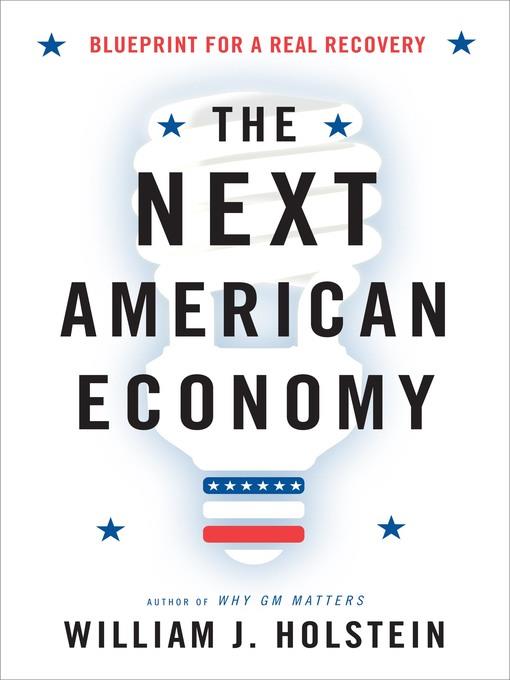
The Next American Economy
Blueprint for a Real Recovery
کتاب های مرتبط
- اطلاعات
- نقد و بررسی
- دیدگاه کاربران
نقد و بررسی

March 1, 2011
Prescriptions for saving our skins from the Chinese economic juggernaut—a replay of the 1980s Japan-as-number-one scare, writes economic journalist Holstein (Why GM Matters, 2009, etc.).
"I do not believe that any country or any company, alone or in combination, is destined to overwhelm the United States economy," writes the author. Despite a sagging infrastructure and an economy smashed onto the rocks during the ongoing economic downturn, America still enjoys the lead in innovation, in large part because we have a "culture that allows experimentation and failure," a quality that more centralized economies do not share. Certainly this is so in the case of consumer goods and gadgets like the iPad, even if it is made in China. But how to ensure that competitive edge? Holstein encourages a program of national-strategy R&D spending, perhaps an unlikelihood under a Republican-controlled Congress apparently bent on scrapping federal supports of the kind—though, he adds, just the sort of thing a strong president could pull off outside a recalcitrant Congress, using the power of executive order to accomplish his goals. The author also urges that the management of economic zones or "clusters" be depoliticized, and certainly "not controlled by a governor or mayor." Encouraging innovation and playing to strengths are the keys. There are things to worry about, Holstein writes, but China and, to a lesser extent, India are not foremost among them. The Chinese command economy, he concludes, is not suitably quick to respond to the demands of the global market, and standards of quality are still below American levels.
If wishful thinking were dollars, this book would be a gold mine. As it is, Holstein provides an optimistic but not necessarily candy-colored view of a resurgent American economy.
(COPYRIGHT (2011) KIRKUS REVIEWS/NIELSEN BUSINESS MEDIA, INC. ALL RIGHTS RESERVED.)

May 1, 2011
Holstein writes for Businessweek, the New York Times, and Fortune, among others, and his most recent book, Why GM Matters (2009), was an intricate look at the near-demise of General Motors. Here he looks to the future to envision what needs to be done to bring prosperity back to American soil, in light of factors such as offshoring and outsourcing; competition from emerging economies such as China, Russia, Singapore, and Taiwan; and the complacency that came from years of easy credit. Holstein insists that America is still number one when it comes to birthing new industries, but in order to replace the 10 to 12 million jobs that were lost during the recession, we will have to find creative ways to retrain these workers. He points out that certain geographic areas of the country often become manufacturing centers, or clusters of economic activity; genomics in San Diego, robotics in Pittsburgh, and simulation technology in Orlando are some examples. Holstein defines an economic strategy that encourages the development of an ecosystem of idea factories such as universities and research centers in close proximity to these clusters of commercial activity.(Reprinted with permission of Booklist, copyright 2011, American Library Association.)

























دیدگاه کاربران